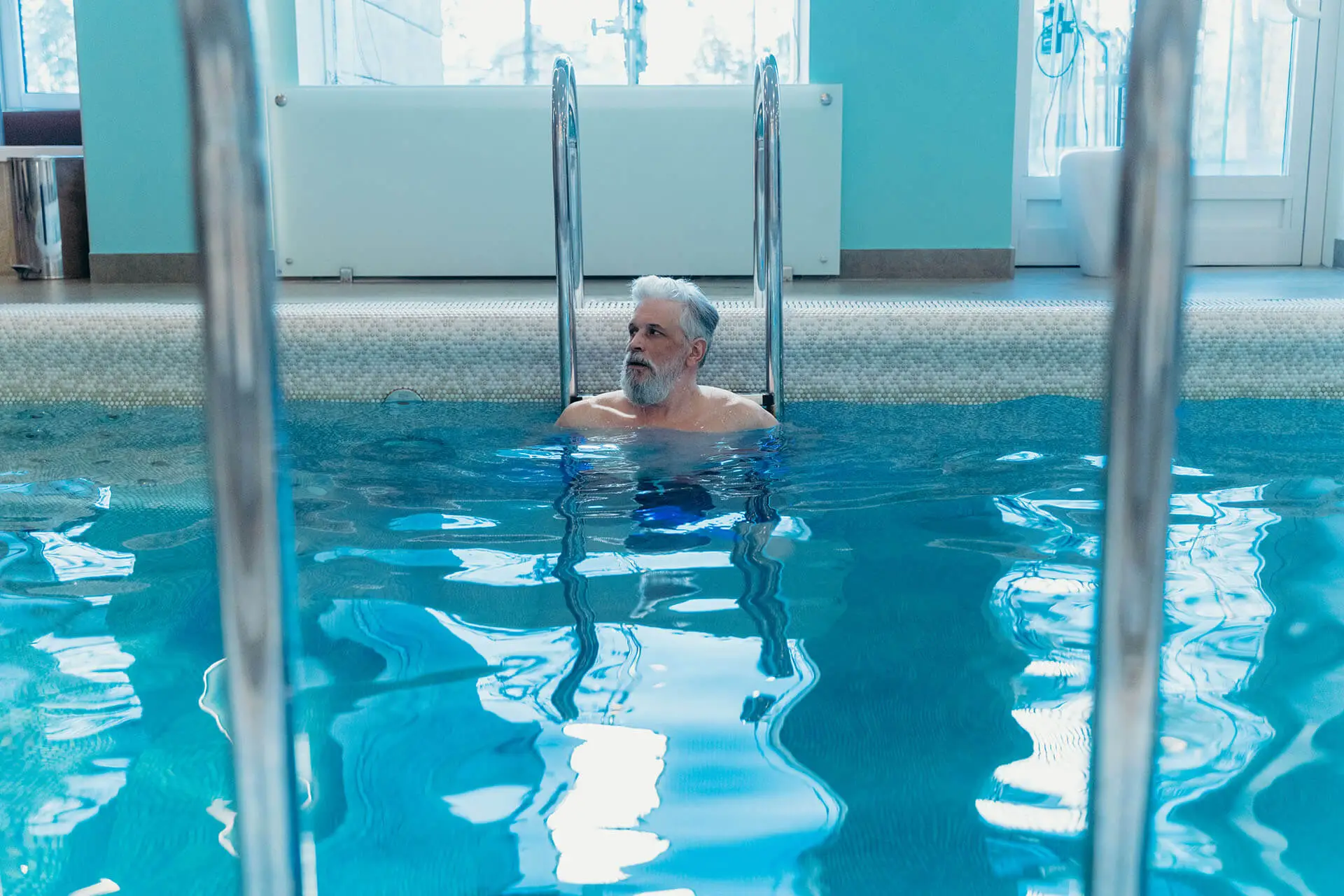For those who suffer from varicose veins, you understand the discomfort that can come along with this condition. They don’t just look uncomfortable; they can also cause aching pain, swelling, and lead to more serious health problems if left untreated. Is there a better way to manage this condition?

Enter swimming: a low-impact, accessible form of exercise that’s often recommended for people with varicose veins. But what makes swimming so good for this condition? Can it help prevent the formation of varicose veins or reduce their appearance? And what precautions should people with varicose veins take when swimming?
Let’s dive deeper into these questions and explore the benefits and considerations of swimming for varicose veins.
Is swimming recommended for people with varicose veins?
Yes, swimming is generally recommended for people with varicose veins. The buoyancy of water helps to offload the pressure from the veins, which can alleviate symptoms such as pain and swelling.
Swimming also improves cardiovascular fitness and overall circulation, both of which can help manage varicose veins. However, you should first consult a doctor before starting swimming to ensure it’s suitable for your specific situation.
Can swimming prevent the formation of varicose veins?
While swimming can’t necessarily prevent the formation of varicose veins entirely, as they’re largely influenced by genetics and age, it can potentially reduce the risk or slow their progression.
Regular swimming strengthens the heart and improves circulation, reducing the pressure on the veins and preventing the blood from pooling in the lower extremities, which is a primary cause of varicose veins. Furthermore, swimming can help one maintain a healthy weight, which also decreases the risk of developing varicose veins.
Can swimming reduce the appearance of varicose veins?
Swimming, like other forms of regular exercise, can help manage the symptoms and slow the progression of varicose veins, but it may not significantly reduce their appearance.
Exercise can lead to weight loss and improved circulation, which can in turn reduce the pressure on your veins. However, once varicose veins have formed, they often require medical treatments like sclerotherapy, laser treatment, or surgery to remove or reduce their appearance.
How does swimming help alleviate the symptoms of varicose veins?
Swimming helps alleviate the symptoms of varicose veins in several ways. The buoyancy of the water reduces the impact on your veins, relieving pressure and reducing pain and swelling.
Swimming also improves cardiovascular health and circulation, which can help prevent blood from pooling in the veins. Furthermore, the cool water can constrict the veins, reducing their size temporarily and relieving symptoms.
How does swimming improve circulation, and how does that affect varicose veins?
Swimming is a full-body workout that gets your heart pumping, which improves your overall cardiovascular health and circulation. Improved circulation means that blood is less likely to pool in the veins, which is one of the primary causes of varicose veins.
Furthermore, the rhythmic movements of swimming encourage blood flow back to the heart, reducing pressure on the veins in the lower extremities.
Are certain swimming strokes better than others for managing varicose veins?
There is no specific stroke that is proven to be better for managing varicose veins. The most important thing is to find a stroke that you are comfortable with and that allows you to swim regularly. Freestyle, backstroke, breaststroke, and butterfly all engage the leg muscles and promote good circulation, which can help manage varicose veins.
How frequently should I swim to see improvements in my varicose veins?
While the exact frequency can depend on individual circumstances and should be discussed with your doctor, a general guideline is to aim for at least 30 minutes of moderate-intensity aerobic activity, such as swimming, five days a week. This is in line with the American Heart Association’s recommendations for physical activity.
Are there risks or downsides to swimming with varicose veins?
In general, swimming is considered a low-risk exercise for people with varicose veins. The buoyancy of the water reduces strain and pressure on the veins, and the cool water can help to reduce inflammation.
However, everyone is different, and what works well for one person may not work as well for another. Speak with your doctor before starting a new exercise regimen if you have varicose veins.
What precautions should I take while swimming with varicose veins?
Once you’ve been cleared to swim by your doctor, warm up properly before you start swimming to prepare your body for exercise and reduce the risk of injury. After swimming, take the time to cool down and stretch. If you experience any pain or discomfort while swimming, stop and rest. If the pain continues, seek medical attention.
Is swimming more beneficial than other forms of exercise for varicose veins?
Swimming can be a particularly beneficial form of exercise for people with varicose veins because it is low-impact, provides resistance for muscle toning, improves cardiovascular fitness, and promotes good circulation.
However, other forms of low-impact exercise, such as cycling and walking, can also be beneficial for managing varicose veins. Choose an exercise that you enjoy and can perform regularly. The best form of exercise for you will depend on your personal preferences, physical abilities, and overall health, but swimming is not a bad choice at all.
Sources:

